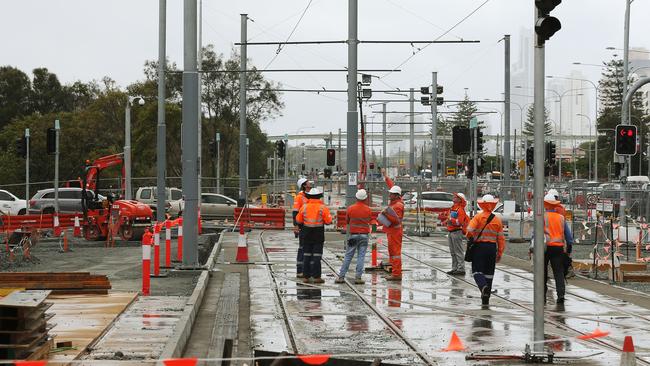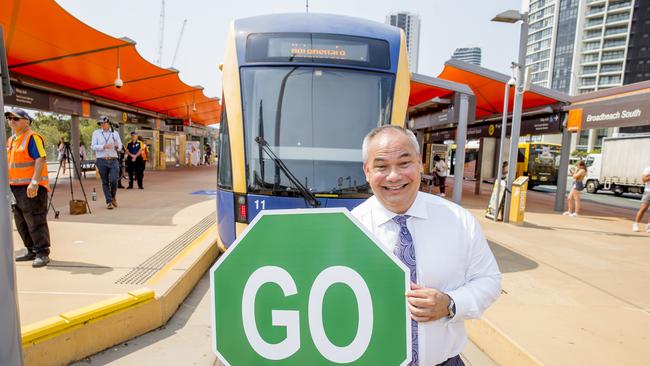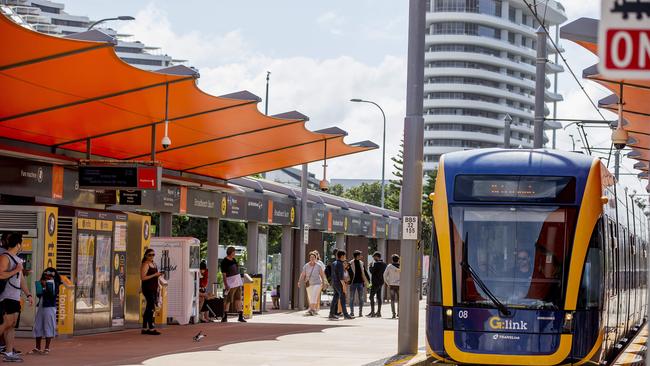Ann Wason Moore: Gold Coast doomed to repeat light rail mistakes unless it looks back at Stage 1
Those who do not learn history are doomed to repeat it - that’s why to keep a new round of businesses safe, writes Ann Wason Moore, we must look first at our light rail mistakes.
Opinion
Don't miss out on the headlines from Opinion. Followed categories will be added to My News.
THOSE who do not learn history are doomed to repeat it.
Fortunately on the Gold Coast, we don’t have to look back very far to find a very important lesson when it comes to the light rail.
Mention the construction phase of Stage 1 down in Southport and business owners will shudder at the memory … those who survived it, that is.
As successful as our G:Link rapid transit system is now, and as much as I personally can’t wait for it to stretch down south to my suburb, we can’t ignore that building these tramlines take their toll on local communities.
In fact, one business leader tells me the Gold Coast Stage 1 experience is now studied in cities around the world as a perfect example of what not to do.
Indeed, back in 2014 then-Gold Coast Central Chamber of Commerce president Peter Yared warned Sydney-siders to brace themselves for a devastating impact to business as construction began on the NSW capital’s own light rail system.
GOLD COAST LIGHT RAIL STAGE 4 HEADS SOUTH
“It has been absolutely diabolical what the light rail construction has done to the area, from Southport to the other areas affected by the system,” he said.
“At least 13 per cent or more of the businesses have shut down and gone out of business due to the length of the construction.

“We realise it was busy and this work needed to take place but it could have been handled a lot better. Nothing is going to change the damage that has been done and it is going to take at least four years for local business to maybe get back to where it was.”
Fast-forward five years and now we’re about to start construction of Stage 3A of the light rail, from Broadbeach to Burleigh, in the midst of the worst economic environment since the Great Depression.
Guys, this could get ugly.
But let me be clear: the light rail extension must happen.
It’s a no-brainer. Not only will construction provide hundreds of jobs when they will be most needed but excellent public transportation is not just good for the environment, but good for the city - residents and businesses alike will ultimately benefit.
MAJOR ROAD AND RAIL PROJECTS PUSH AHEAD TO BOOST ECONOMY
Unfortunately, it’s just that getting there is the opposite of fun.
The businesses most likely to be affected by the light rail route have already been hammered by the pandemic. These are not large chain stores or multinational firms but small businesses owned by local families.

To that end, the Gold Coast Central Chamber of Commerce is conducting a survey among its members to find out just how businesses can stay alive.
President Martin Hall says the timing of light rail construction will make recovery from the effects of COVID-19 even harder.
OTHER NEWS
Tradies band together to help struggling Coast vet
Councillor: Don’t ‘set your hair on fire’
Killer’s monstrous acts continue to torture family left behind
“That’s definitely the undertone from both a financial perspective and also mental health, there’s passion from people to continue but we just don’t know how much longer some of these businesses can keep rolling with the punches,” he says.
“We believe the information from this survey will equip us to equip them.
“The Chamber is firmly in favour of the light rail extension, but we don’t want businesses to pay the price. We need to make sure before construction begins that owners have the support they need.

“There’s a fish and chip shop at Burleigh that will effectively have its front door barricaded off, how can they still sell chips if no one can see them? We need to help them access digital marketing and social media so they can survive.
“Hopefully when it’s all over and the light rail arrives, they will thrive.”
Indeed, the solution is not necessarily about compensation but creative thinking.
As a city, we must find ways to better support our local business community during construction of this essential project so that they live to profit from its success. And our leaders must listen to the needs of those most affected.
Let’s do this in memory of those businesses who made the ultimate sacrifice in Stage 1.
Let’s make sure we think ahead by first looking back.



